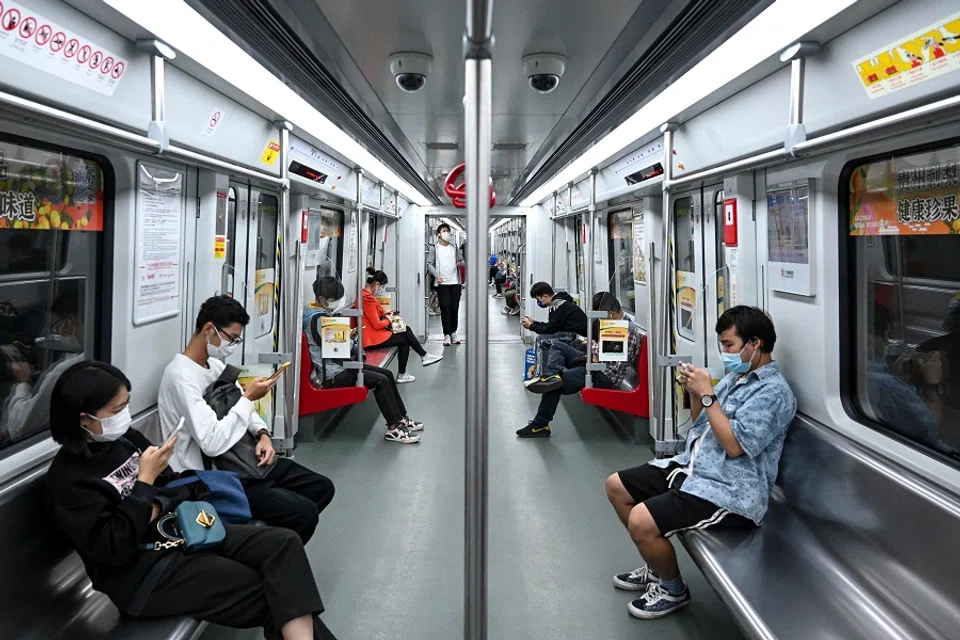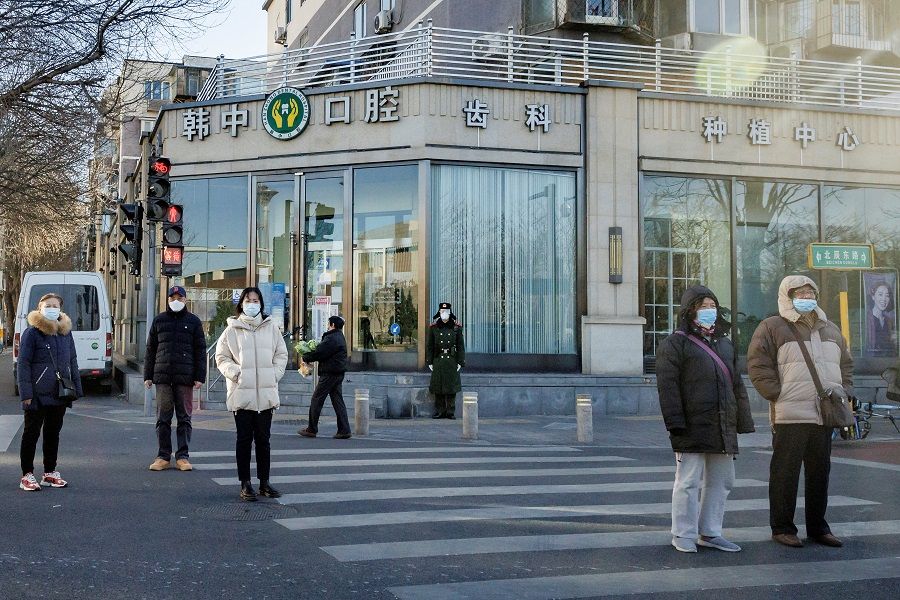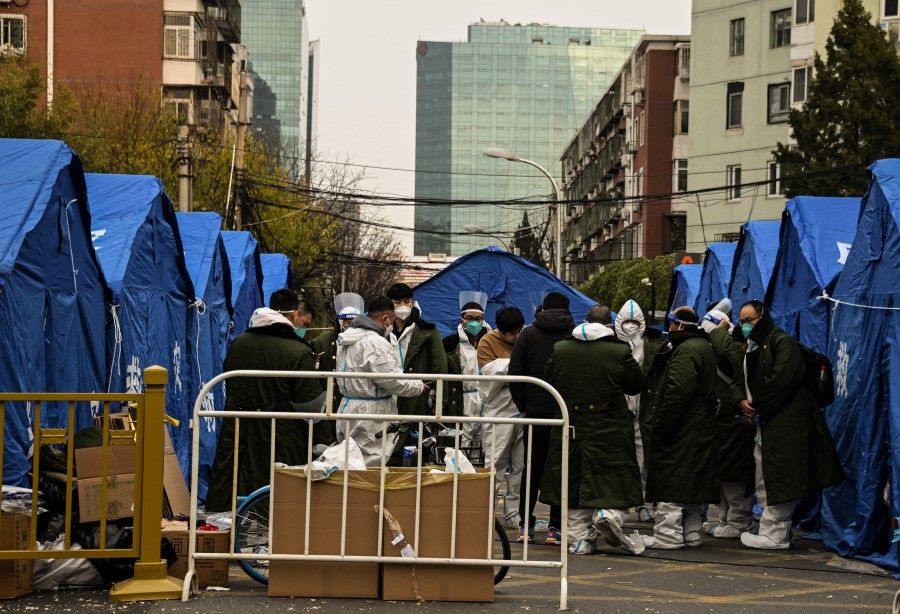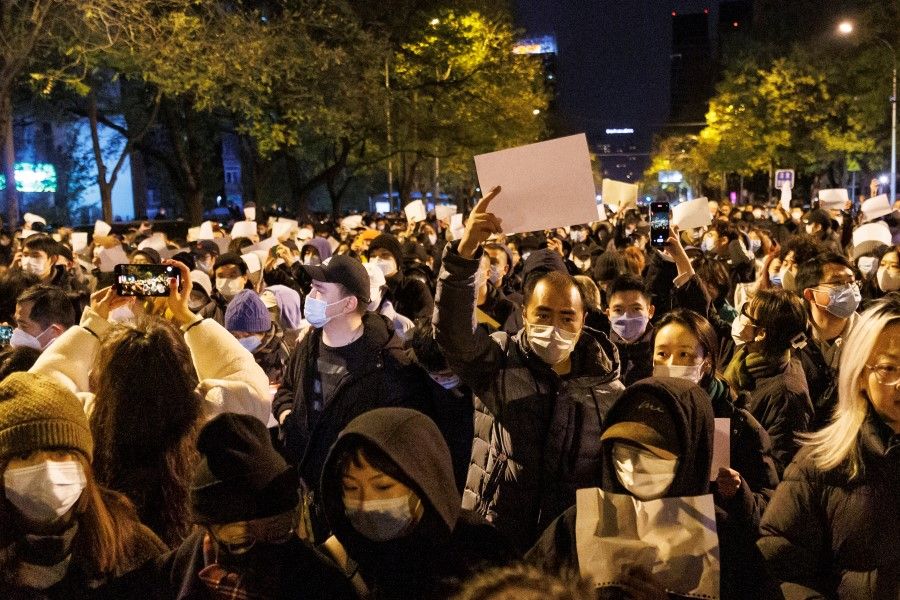China is finally easing Covid rules, but not all are happy

Chinese Vice-Premier Sun Chunlan convened a seminar of experts on 30 November to discuss anti-epidemic measures. The official press release was only about 500 words long, but market players and observers immediately saw the difference. Chinese RMB and US-listed Chinese stocks rose collectively after the news went out late that night.
'New stage' of Covid-19 controls
The optimism surrounding China's decision to amend its anti-Covid policy came from Sun's statement during the seminar: "As the Omicron variant becomes less pathogenic... our fight against the pandemic is at a new stage and it comes with new tasks."
It is commonly known that the Omicron variant is less pathogenic and deadly than other variants, and Chinese experts have boldly spoken up over the past few weeks, including Zhang Boli, an academician with the Chinese Academy of Engineering who earned the national honorary title "the People's Hero" for his contributions to the fight against Covid-19.
While attending a medical conference in mid-November, Zhang said that according to statistics, the rate of critical Covid-19 infections and deaths is low, meaning that the coronavirus is weakening. However, he pointed out that the complete elimination of the virus is still difficult as the Omicron variant is more infectious.

Sun's remark is the first time a senior Chinese official responsible for epidemic prevention and control has publicly commented that the coronavirus has become "less pathogenic", even adding that China's fight against the pandemic is "at a new stage" and "comes with new tasks".
While Xinhua did not specify what the "new tasks" are, observers of China's Covid-19 battle would notice that Sun did not repeat China's unwavering adherence to the dynamic zero-Covid policy.
In fact, since the start of this week, the Chinese central government has not mentioned "dynamic zero-Covid" in three consecutive occasions and documents. Previously, the State Council's Joint Prevention and Control Mechanism emphasised on 29 November the need to rectify excessive controls and to speed up Covid-19 immunisation of the elderly. These show the shifting focus of the officials from achieving zero-Covid through imposing lockdowns, to containing the pandemic through vaccination, and imply the easing of anti-epidemic measures.
Public fears amid easing
However, perhaps intimidated by being labelled "lying flat" over the past two years and more, and also out of habitual reliance on the old ways, local governments and Chinese media are still hesitant and doubtful about the three signals that they received this week.
Of course, some cities and districts took swift action after the news broke, including Guangzhou's Baiyun, Panyu and Liwan districts, which lifted all temporary closed-off management measures on 30 November. Apart from high-risk areas, dine-in services have also resumed in Tianhe district. The Chengdu health commission has also removed checks on PCR test results for those returning to their residential compound.
The biggest obstacles now for China to come together and make the transition back to normal life and economy, are the excessive fear of the virus and the mental dependence on the old method of implementing lockdowns.

Quoting sources with knowledge of the matter, Reuters reported on 1 December that China would allow select groups of people who tested positive for Covid-19 to quarantine at home, such as pregnant women, the elderly and those with underlying illnesses. Experts have also suggested that in the next step of improving Covid-19 controls, officials could allow patients with mild Covid-19 infections the option to isolate at home.
A Chinese friend texted, "Once frequent testing and contact tracing are removed, and those with mild symptoms can stay at home, that would basically be opening up." But will the way forward be that smooth?
Of course not. The biggest obstacles now for China to come together and make the transition back to normal life and economy, are the excessive fear of the virus and the mental dependence on the old method of implementing lockdowns.
... some residents were frightened into not leaving their homes, while others got the wrong idea that after three years of control, the government no longer cared, crying, "We're on our own!"

When controls are eased, infections will definitely increase or even spike. Given this likelihood, the authorities should be well prepared to meet the needs in medical resources, and address public reaction.
Indeed, public anxiety will be unavoidable. In mid-November, Shijiazhuang in Hebei took the lead in lifting mass testing and removing checks of PCR test results to take public transport. However, some residents were frightened into not leaving their homes, while others got the wrong idea that after three years of control, the government no longer cared, crying, "We're on our own!"
Smooth journey home for Chinese New Year
Such fears are not unfounded, but these are obstacles that can be overcome. The Chinese people's fear of the virus can be assuaged by a firm science-based approach and expert influence; as well as comprehensive, accurate and transparent data on severe cases, deaths, the median age of deaths and whether they had underlying conditions; and spurred on by the global experience.
From another perspective, with many countries opening up, if China continues to be stuck in the uncertainty of lockdowns or similar measures, the economy and people will reach a breaking point. The protests that happened over the past weekend in cities such as Shanghai, Beijing and Nanjing show the pent-up unhappiness among the people and the invisible threat to social stability stemming from prolonged lockdowns.
Essentially, China's easing of Covid-19 controls can be taken as read, but the question is how to get there.

Furthermore, lockdowns are causing increasing collateral damage, with widespread anger as several Covid-19 testing companies have been revealed to be in collusion with the authorities to profit from the pandemic, while the costs of free large-scale testing and quarantine have aggravated the local governments' financial burden.
Essentially, China's easing of Covid-19 controls can be taken as read, but the question is how to get there. At a press conference on 12 November, the State Council's agency in charge of Covid-19 controls said that there would be "small steps taken constantly", which was repeated by Vice-Premier Sun Chunlan at the seminar with health experts on 30 November. While it is about taking one step at a time, the main direction is undoubtedly to reduce testing, lockdowns and quarantine. Be it zero-Covid or living with the virus, what matters is that life is gradually returning to normal.
At this pace, the authorities may make further announcements by New Year's Day. Will people across China be able to travel more easily to their hometown for Chinese New Year? Will those with mild Covid-19 symptoms be able to quarantine at home by the first half of next year? These scenarios fill one with hope and expectation.
This article was first published in Lianhe Zaobao as "中国防疫政策真的在转向了".
Related: Chinese Covid testing firms come under fire for pandemic profiteering | What to think about when you think about China under Covid | Covid protests: A repressed China needs an outlet to return to equilibrium | China's exorbitant cost of zero-Covid | Two steps forward, three steps back: Lockdowns in China still prevalent
